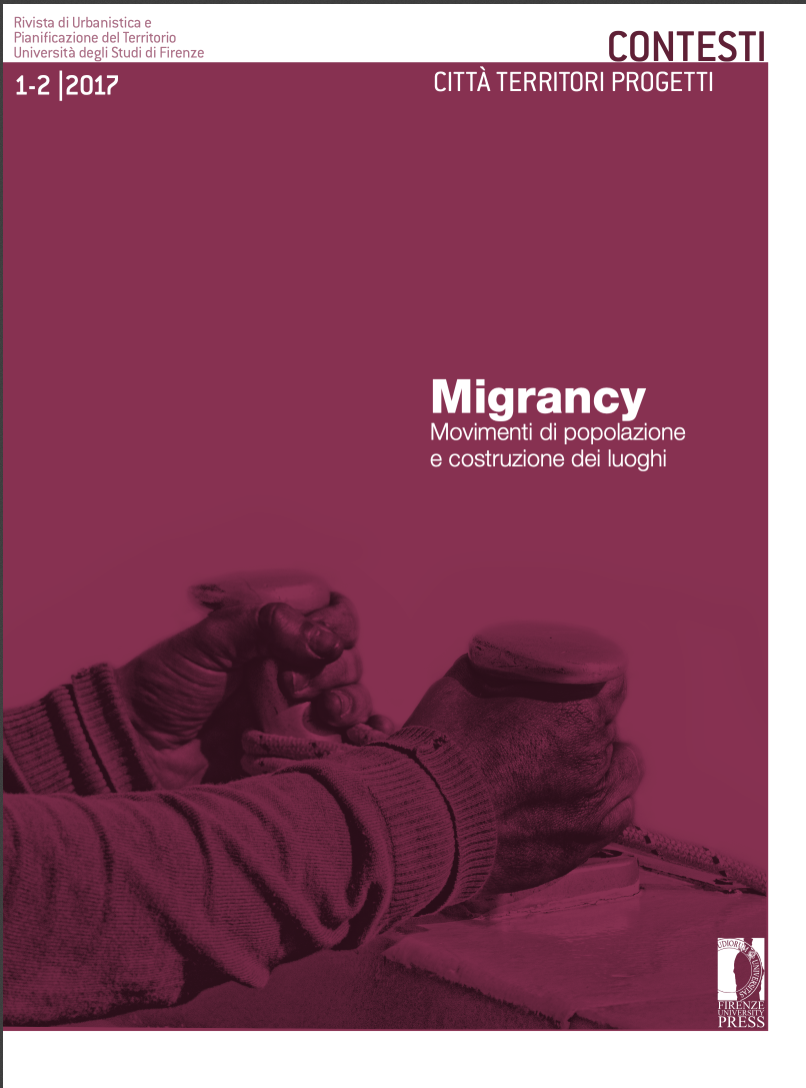Published 2018-11-14
Keywords
- Migration,
- mobility turn,
- city,
- planning
How to Cite
Abstract
Mobility and migrations characterize the transformations of contemporary cities and societies. On the one hand the mobility of things and goods, knowledge and information, of natural and artificial resources, images and ideas, cultural models and life-styles. On the other, the increasingly complex reality of population movements, at local, global, regional or transnational levels, driven by economic needs or the dangers of war, climatic change or the wish for a better life. Migrants who move from the countryside to the cities, and sometimes the opposite, from the south to the north and viceversa, from the mainland to the coast, mountains to plains, from centres to suburbs or from the suburbs toward new centres. Adding up all of these possible relocations, research has estimated that population movements have involved over the past few years more than a billion people. Scientific literature and on-field research have attempted to define, foresee and govern the phenomenon, also through new definitions and analytic categories, in order to include all its various aspects: migrancy, dislocation, displacement, expulsion, unsettlement. This number of Contesti proposes to discuss the spatial effects of population movements within the larger theme of mobility in general, and the consequences on the design of urban and regional policies. Migrancy and placemaking, population movements and spatial consequences, are considered.


